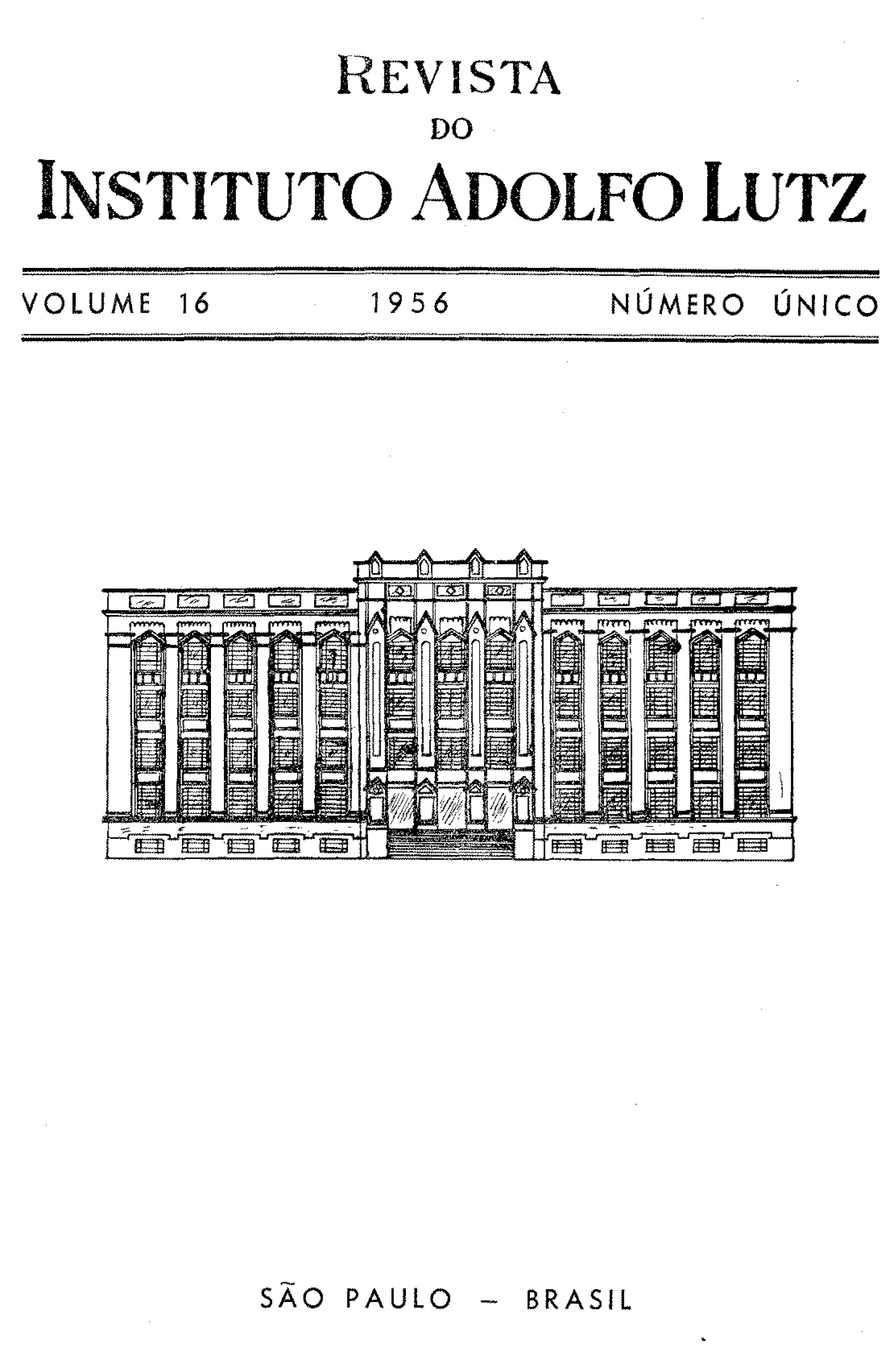Abstract
Although the diagnosis of shigellosis and acute salmonellosis does not represent a great problem for the clinician or for the laboratory worker because symptomatology is typical and the germ easily found in faeces, the same does not happen with the chronical form, in which the causative agent can hardly be depicted by stool culture, and the symptomatology is not characteristic. In this paper the authors present the results of 5.918 faeces examinations performed from 1950 to 1954 which yielded 836 results positive for dysentheric bacilli and salmonellas. In a city of the State of São Paulo, Itatiba, 4,47% of 1.476 stool cultures were positive for pathogenic enterobacterias. Unfortunately, a conclusion could not be reached regarding a difference in incidence between urban and rural populations. The authors tested several technics of faeces collection in 123 cases of chronic enterocolitis. Is most cases four serial samplings were made at different days, using the following techniques: a) faeces passed naturally; b) anal swab; c) aspiration; d) scooping of the rectal mucosa. In 123 patients there were made 2.268 cultures of which 42 yielded pathogenic enterobacterias. By using the Chi Square test with 5% probability in order to compare the several sampling technics, it was concluded that the employment of those consisting in the direct collection from the intestinal mucosa does not bring any advantage for the isolation of pathogenic enteric bacteria, despite the use of specialized instruments. Repeated collection proved more useful than direct collection from the rectal ampulla. Blood agglutinins were searched by employing dead germs as antigens. Excellent results were obtained in the shigellosis cases caused by Shigella flexneri. In these cases, an agglutinating titer higher than 1/160 usually corresponded to the isolation of the germ from the faeces. The technic of coproantibodies titration employed yielded uncertain results.
References
1. ASSIS, A. de - 1935 - Shigeloses crônicas. Areh. Bras. Med. 25 (3): 133.
2. ASSIS, A. de - 1937 - Contribuição ao estudo das infecções crônicas por baeiIos disentéricos. Arq. Hig. 7 (1): 9-26.
3. BARKSDALE, W. L., GHODA,A. e OKABLE,K. - 1951 - CoproaggIutinins in ulcerative colitis. Jorn. Inf. Dis. 89: 47-57.
4. BOYD, J. S. K. - 1940 - The laboratory diagnosis of bacillary dysentery, Trans. R. Soe. Trop. Med. Hyg. 33 (6): 553-571.
5. BURROWS,W., ELLIOT,M. E. e HAVENS,T. - 1947 - The excretion of coproantíbody in experimental enteric cholera in the Guinea pig. Journ. In], Dis. 81: 261-281.
6. DAVIES,A. - 1922 - An investigation into the serological properties of dysentery stools. The Laneet 2 (2): 1009-1012.
7. EWING,W. H. - 1953 - Sorological reJationships between Shigella and Coliform cultures. Journ. Bacteriol. 66: 333-340.
8. FELSEN,J. - 1938 - Crypt aspíratíon: Spray culture method for the isolation of B. dysenteriae. Journ. Lab. Clin, Med. 23: 630-632.
9. FELSEN,J. - Bacillary dysentery, colitis and enteritis. W. B. Saunders Comp, Philadelph and London; 1945.
10. GALTON,M. M., HARDY,A. V. e MITCHELL,R. B. - 1950 - The publíc health laboratory dlagnosís of enteric infections. Am. Jounr. Trap. Med. 30 (1): 77-90.
11. GONZÁLEZ,L. M., ARBONA,G. e FERNÓS,J. - 1950 - Studies in bacillary dysentery. Failure to detect coproantibodies ín patients with bacillary dysentery (F'lexner) , Journ. tnr. Dis. 87: 194-200.
12. HARDY,A. V. e WATT,J. - 1944 - Newer procedures in laboratory diagnosis and therapy in the control of bacillary dysentery. Am. Journ. Publ, Health 34 (1): 503-509.
13. HARDY,A. V. e GALTON,M. M. - 1955 - The role of food processing plants ín the dissemination of Salmonella. Am. Journ. Trop. Med. Hyg. 4 (4): 725-730.
14. HORMAECHE,. e SURRACO, N. L. - 1941 - Estudios sobre el valor de Ios metodos de aislamiento de Salmonellas y Shigellas. Puerto Rico Health Bui. 5: 329-344.
15. KAUFFMANN,F. - Enterobacteriaceae. Copenhagen, Ejnar Munksgaard, 1951.
16. NETER, E., BERTRAM,L. F., ZAK, D. A., MURDOCK, M. R. e ARBESMAN,C. E. 1952 - Studies on hemagglutination and hemolysis by Escherichia coli antisera , Journ. Exp. Med. 96: 1-15.
17. PESTANA,B. R. e FARACO,M. J. - 1940 - Do emprego do meio de agar-desoxycholato de sodíum-cítrato (Leifson) para isolar bacilos disentéricos. An. Paul. Med. Cir. 40 (2): 307-314.
18. PREDCUENSKY,S. e MOROZ, O. - 1940 -- A method for early and rapid diagnosis of dysentery. Zh. Mikrobiol. Epidemiol. Imniunot. 7: 3-11.
19. SUIGA, K. - 1898 - Ueber den Dysenteriebacillus (Bacillus dysenterfae) . Centro f. Bakteriol., 1. Abt. Oriq. 24: 817-828.
20. SILLIKER, J. H., RITTENBERG,S. C. e GOODLOW,R. J. - 1952 - Coproantibody detection in the diagnosis of enteríc infections. Am. Journ. Clin. Path. 22 (2); 1018-1023.
21. TAUNAY, A. E. - 1951 - Bacteriologia das shigeloses. Rev. Inst. A.. Lutz 11: 49-102.
22. THOMAS, M. E. M. - 1954 - Disadvantages of the rectal swab ín diagnosis of diarrhoea. Brit. Med. Journ. 2 (1): 394-396.
23. THOMSEN, S. - 1945 - The numbers of pathogeníc bacilli in faeces in intestinal diseases. Journ. Hy. 53 (2): 217-224.

This work is licensed under a Creative Commons Attribution 4.0 International License.
Copyright (c) 1956 Instituto Adolfo Lutz Journal
